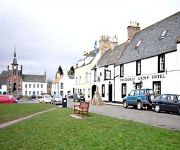Facts and Data
Webpages:
Official Unesco Page
Edinburgh World Heritage Annual Review 2011-12
Historic Scotland
Edinburgh World Heritage Trust
World Heritage in Edinburgh
View photos from OUR PLACE the World Heritage collection
Basis Data:
Unesco World heritage since: 1995
Size of heritage:
Coordinates:
Longitude: -2,783°
Latitude: 55,950°
Summary
Edinburgh has been the Scottish capital since the 15th century. It has two distinct areas: the Old Town, dominated by a medieval fortress; and the neoclassical New Town, whose development from the 18th century onwards had a far-reaching influence on European urban planning. The harmonious juxtaposition of these two contrasting historic areas, each with many important buildings, is what gives the city its unique character.
Location on Map
Show bigger map on Openstreetmap
Old and New Towns of Edinburgh
The Old and New Towns of Edinburgh, located in the Lothian Region of Scotland, are a UNESCO World Heritage site that showcases the rich history and architectural beauty of the city. This site encompasses both the medieval Old Town and the Georgian New Town, which together form a unique and harmonious urban landscape.
History
The history of the Old Town dates back to the 12th century when Edinburgh Castle was established on the volcanic rock known as Castle Rock. Over the centuries, the city grew around the castle, with narrow streets and tall tenement buildings characterizing the medieval layout. The Old Town became a center of trade, education, and culture, attracting scholars, artists, and merchants from all over Europe.
In the 18th century, the city expanded to accommodate its growing population and the need for modern infrastructure. The New Town was designed by architect James Craig, featuring wide streets, spacious squares, and elegant Georgian-style buildings. This expansion transformed Edinburgh into a leading European city of the Enlightenment, renowned for its intellectual and cultural achievements.
Current State
Today, the Old and New Towns of Edinburgh continue to captivate visitors with their historical significance and architectural grandeur. The Old Town, with its narrow alleys and hidden courtyards, is a labyrinth of medieval and Renaissance buildings. The Royal Mile, the main street of the Old Town, connects Edinburgh Castle to the Palace of Holyroodhouse, the official residence of the British monarch in Scotland.
The New Town, on the other hand, offers a stark contrast with its wide streets and neoclassical buildings. Princes Street, the main thoroughfare, is lined with shops, hotels, and gardens, providing stunning views of the Old Town and the surrounding landscape. The New Town is also home to several prominent landmarks, including the Scott Monument and the Georgian House, which offer insights into the city's past.
Both the Old and New Towns of Edinburgh are not just architectural marvels but also vibrant cultural hubs. The city hosts numerous festivals throughout the year, such as the Edinburgh Festival Fringe, the largest arts festival in the world. The Royal Mile and Princes Street are bustling with shops, restaurants, and pubs, offering a taste of Scottish cuisine and hospitality.
Preservation and conservation efforts have been paramount in maintaining the integrity of the Old and New Towns. The Edinburgh World Heritage Trust, in collaboration with local authorities and stakeholders, ensures that any development or restoration work adheres to strict guidelines to protect the authenticity and character of the site.
The Old and New Towns of Edinburgh, with their historical significance, architectural splendor, and vibrant cultural scene, continue to enchant visitors from around the world. This UNESCO World Heritage site stands as a testament to the city's rich heritage and its enduring contribution to human civilization.
Hotels and places to stay
Greywalls Hotel and Chez Roux
Tweeddale Arms Hotel
Duck's Inn
Maitlandfield House Hotel
Goblin Ha'
Railway Hotel
Videos from the area
Videos provided by Youtube are under the copyright of their owners.













